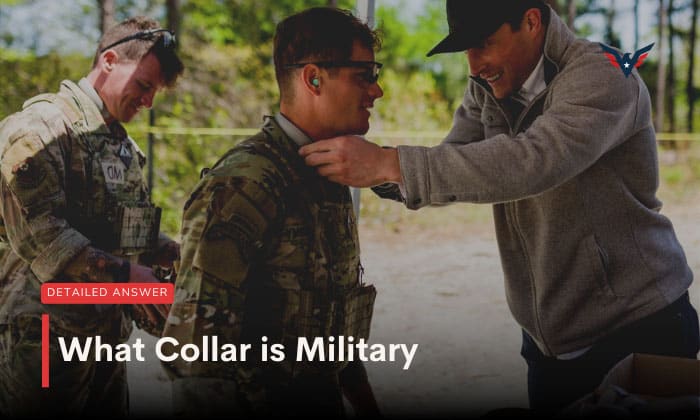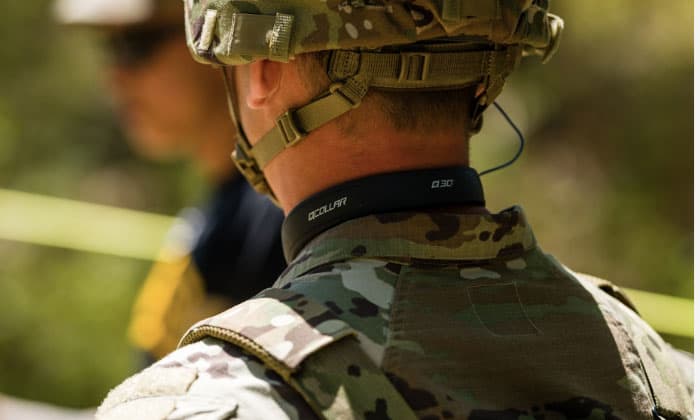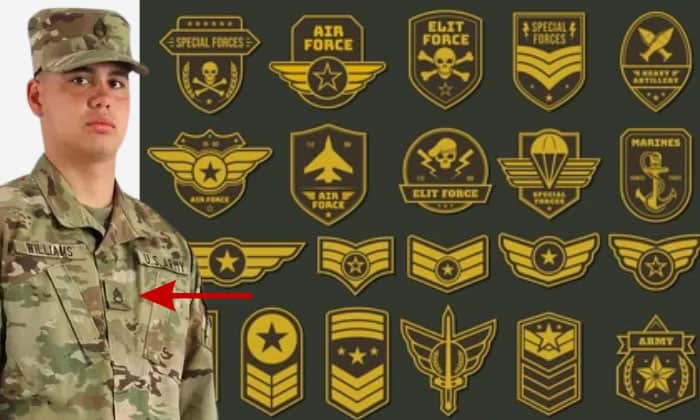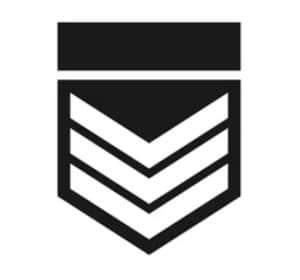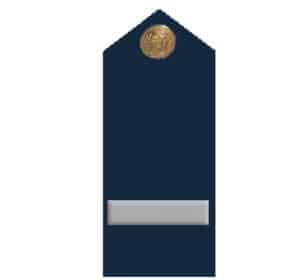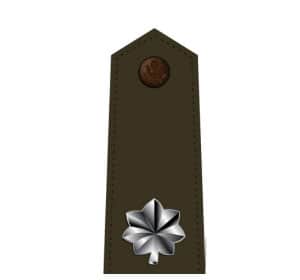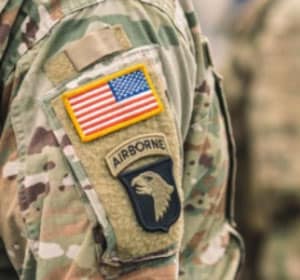Collars have a significant meaning in identifying individuals and different types of employment. Determining collars means stereotyping various individuals based on recognizing their skills, work settings, and job positions.
Similarly, collars in the military are crucial for establishing and understanding soldiers’ roles, ranks, and responsibilities. They convey vital information about a soldier’s status, achievements, and authority.
Military collars are essential for each soldier, and their significance is undeniable. Keep on reading to enhance your understanding of what collar is military.
Table of Contents
Explanation of Collar in Military
In the fashion world, collars are essential elements of garments as they provide structure and frame to your face, adding significance to your overall appearance in the fashion industry.
Likewise, in the professional realm, collars are used to categorize and differentiate different groups of workers. These distinctions help market researchers understand the culture, mindset, motivation, and purchasing power of people in various collar groups.
Different types of collar jobs exist in the professional world, including white, blue, brown, green, pink, and new-collar positions.
Similarly, in the military, understanding the collar definition provides an overview of the essential elements each level of the hierarchy represents. Observing the type of collar worn by soldiers, one can gather valuable details about their authority, duties, and expertise.
History and Evolution of Military Collars
The use of military uniforms dates back to 1622, but the Army initiated official uniform regulations in 1779.
Military uniforms have evolved to serve various purposes based on their usage. Incorporating military uniform collars into the attire dates back to the 17th century, aiming to reduce neck injuries during combat. These collars also enhance heat dissipation and comfort for the wearer.
As early as the 14th century, soldiers and military groups in Europe utilized a protective throat accessory called a Gorget as part of their attire. Over time, the Gorget evolved from a vital means of protection tool into a tiny component of the military uniform.
These accessories hold no practical significance and solely serve as decorative ornaments. Subsequently, the fabric patch on the collar developed into a different colored cloth initially utilized to strengthen the buttonholes at the collar of a uniform coat.
As the narrative progresses, the introduction of the patch followed during the Boer War in the 1880s, serving the purpose of distinguishing senior officers. The military rank patches were then affixed to the attire of an officer and utilized as decorative features for momentous military ceremonial events.
These Gorget serve the purpose of knowing that an individual is currently on duty and signify their respective class.
Over time, these military collar ranks gradually made their way onto the shoulders or caps of soldiers. Until today, soldiers still utilize Gorgets or military collars as part of their uniform and prominently display them during ceremonies such as parades.
Significance of Collar Insignia in the Military Hierarchy
“Insignia” is a term that refers to an authorized symbol or indication utilized to differentiate a group or individual based on their title, rank, or awards. The military collar insignia is stripes and bars, which convey the hierarchical class of individuals. It also serves to indicate membership in specific areas of military specialization.
The significance and value of this collar insignia for soldiers lie in its ability to categorize and classify each member, ranging from Private to General. These collars aid the chain of command in identifying military personnel as they collaborate, assist, or engage with them at a stationed or deployed base.
By observing a soldier’s collar insignia, you can quickly ascertain their hierarchical class, allowing you to interact with them in a manner that shows appropriate respect and understanding.
Remember that it is essential to comprehend that the chain of command is highly respected, and challenging or questioning authority is viewed unfavorably and discouraged.
To better understand the military hierarchy, let’s explore the different categories of military ranks.
What Are the Different Military Ranks?
1. Enlisted Personnel:
Enlisted personnel play a vital role in the military. These soldiers acquire specialized skills and job functions, employing their knowledge to contribute to the success of their unit’s mission.
This hierarchy includes three subgroups:
- Junior Enlisted Personnel (E1-E4)
These new soldiers typically serve in these ranks for their first enlistment term, which usually takes four years. As they gain experience and time in service, they assume more responsibilities. Additionally, soldiers in this category do not have any collar insignia in their uniforms.
- Mid-level Noncommissioned Officers (E5-E7)
These individuals in this group effectively execute orders from their superior officers. They bear greater responsibilities compared to the lower rank personnel. They assume leadership roles over small units, typically composed of a few to several dozen personnel, and possess expertise in specific areas of specialization.
- Senior Noncommissioned Officers (E8-E9).
These soldiers commonly assume the role of senior advisors to commanders or serve as staff NCOs.They also provide support to the enlisted force in general.
2. Warrant Officers
Warrant officers are essential in Commonwealth nations and the United States, being proficient specialists in technical fields such as aviation, intelligence, and maintenance. They contribute to the technical foundation of the U.S. Army.
3. Commissioned Officers
Commissioned officers, with the highest standing, typically enter their positions with prior military ranks. They train and lead enlisted soldiers, ensuring their protection, morale boost, and professional development. Additionally, commissioned officers oversee the daily training of recruits in their platoon.
Military Insignia
Now that you understand the different military ranks, it is fundamental to familiarize yourself with the various insignia and who wears them.
1. Chevrons:
Chevron insignia is a V-shaped mark or symbol commonly worn by enlisted military personnel.
2. Bars:
Officers of lower rank wear these insignia. The sequence of these collars, from highest to lowest standing, includes a single gold bar, silver bar, two silver bars, and striped bars.
3. Oak leaves:
Lieutenant colonel ranks wear these military collar insignia, with the sequence of a gold or silver oak leaf indicating the highest to lowest standing.
4. Eagles:
Officers with a grade 6 standing wear the Silver Eagle insignia.
5. Stars:
Officers with the highest pay rank wear this insignia.
Different Types of Collars in the Military
People typically classify workers based on the location of their employment, and this classification is commonly known as “collar jobs.” In the military context, they consider these jobs as belonging to the “brown collar jobs” category.
Many wonder if collars and professional badges are the same things in the military. In fact, these collar badges in the military serve a similar purpose to the collar jobs mentioned earlier. They use this to indicate a soldier’s rank, affiliation, and specialization.
To enhance our understanding of military rank symbols, let’s explore the various types of collars used in the military.
1. Rank Insignia:
Military rank signifies leadership and increases in responsibilities, equipment, and mission. These badges dictate the ranks of the military such as sergeant, lieutenant, or captain and feature symbols, stars, eagles, and stripes.
2. Branch or corps insignia:
These badges show unique symbols for military units and indicate individuals’ membership.
3. Unit insignia:
Army soldiers commonly wear these badges. These symbols reflect the unit’s history or mission.
4. Specialization badges:
Skilled individuals use these collars to show their specific group. For instance, Aviators have pilot wings.
5. Identification badges:
These badges, like nameplates and patches, indicate a military member’s organization, command, or duty.
Conclusion
In conclusion, just like ordinary individuals, soldiers in the military hold various rankings that carry significant importance. Individuals can establish social order and unity within the military community.
This article also delved into the discussion of knowing what collar is military shows notable learning about recognizing and respecting the significance of different collars. It shows different ranks and insignia that distinguish one’s position and responsibilities.

I am Everett Bledsoe, taking on the responsibility of content producer for The Soldiers Project. My purpose in this project is to give honest reviews on the gear utilized and tested over time. Of course, you cannot go wrong when checking out our package of information and guide, too, as they come from reliable sources and years of experience.

